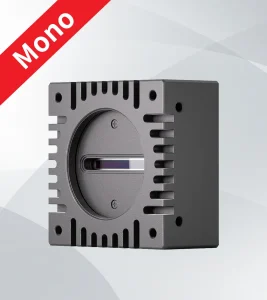Depending on the applications, line scan cameras and area scanner each have their own pros. Line scan cameras, with resolutions between 1K to 4k pixels, are best suited for high speed applications that moving objects must be imaged in a non-stop way. An example of this includes, a line scan camera has 2k pixels resolution was able to accomplish inspection speed reaching up to ~100m/s according from the report in Vision Systems Design last 2024 which is very important for high-speed conveyor systems on manufacturing.
On the other hand, area scan cameras take a simultaneous picture of an entire scene point-in-time — perfect when capturing stationary or slow-moving objects. A regular area scan camera might offer 1 megapixel up to a whopping 20 megapixels giving you great detail and precision. The electronics industry places high demands on precision, and a 12-megapixel area scan camera is ideal for detailed imaging with quality control in industrial fields including the importance of the mechanical sector as confirmed by an article posted here regarding those to follow Cross-process metrology calibration_camera_between_virtual_real pytest-line wherein Imaging Resource puts it up at more info until you reach Sep.
Where most of the difference between them being in their imaging Incidentallyleurs respective approaches. Line scan cameras capture images one line at a time, which makes them ideal for inspecting long continuous surfaces such as webs or rolls of material. One of the case studies discussed in this Automation World article from 2024, a line scan camera was deployed to inspect rolls of textiles and being able to deliver continuous data meant inspection could be very thorough.

In contrast, an area scan camera captures entire frames at once, which is useful when a whole object or scene needs to be viewed all at one time. As an example the March 2024 report in Machine Vision Online stated that, "an area scan camera inspections whole product batches for defects within a single frame as opposed to line scan systems providing much more universal perspective".
Another thing to take into account when considering which type of camera you should purchase is the cost – and costs can vary quite a bit between DSLRs vs. mirrorless cameras as well. A line scan camera can be more expensive as it is specially designed for purpose, they typically run anywhere from $10k-$50k in price range depending upon features and resolution. While area scan cameras are generally less expensive—around $3,000-20,000 according to Vision Systems Design (2024 pricing guide)—and more affordable for many applications.
These cameras are also differentiated by integration and some application-specific features. Line scan cameras are typically employed in fast production environments and can perform scans continuously (on synchronous conveyor systems), whereas area scan cameras collect high-resolution images of stationary objects. As an example, in a 2024 review by Imaging Resource indicates that area scan cameras are the preferred solution for lab applications because of its ability to take high-resolution images of samples at once.
When choosing one or the other, be more precise with what your application requirements are in terms of speed, resolution and the type of object that will get inspected. Being aware of these disparities when investigating the possibilities offered by line scan camera will help choose the right technology to gain best results.